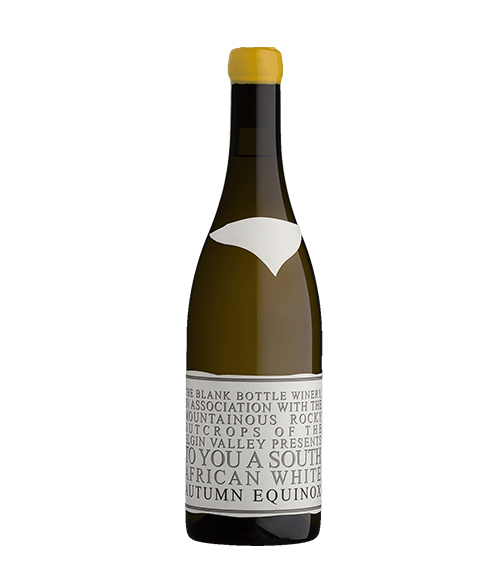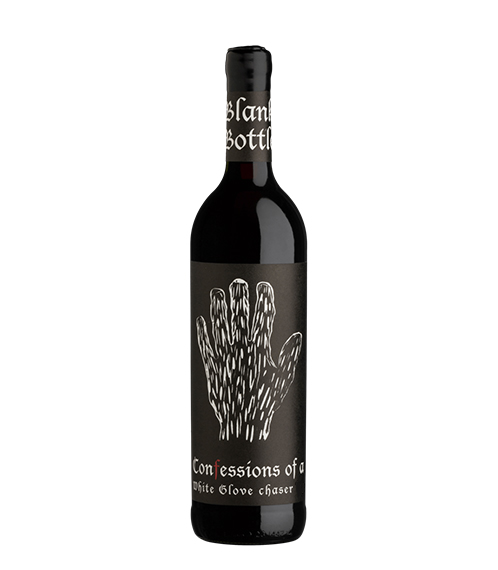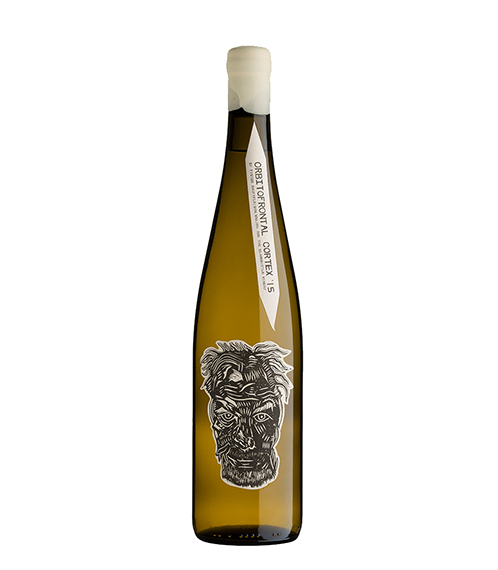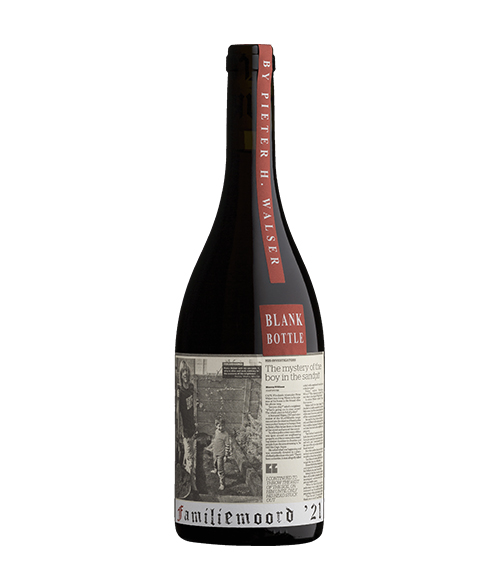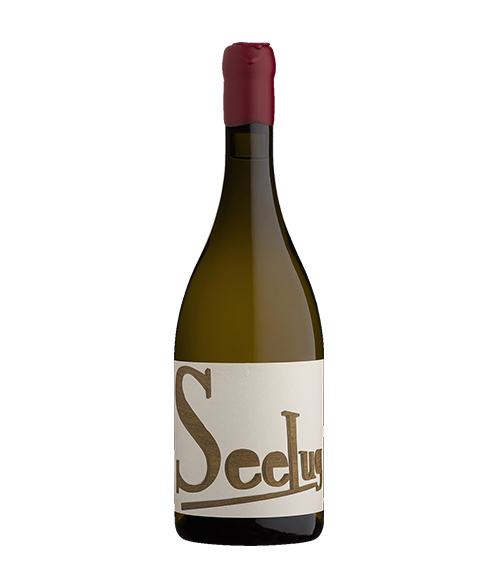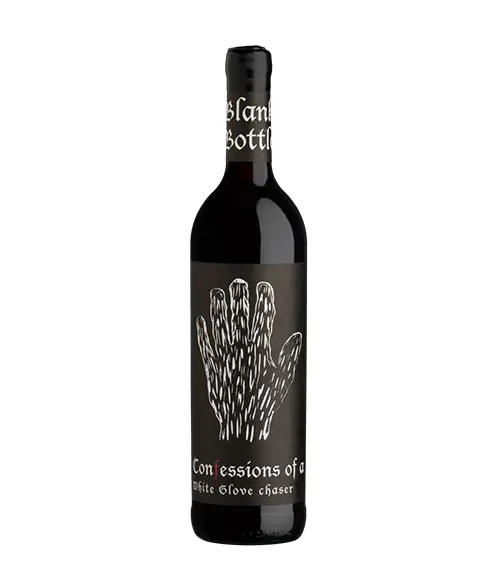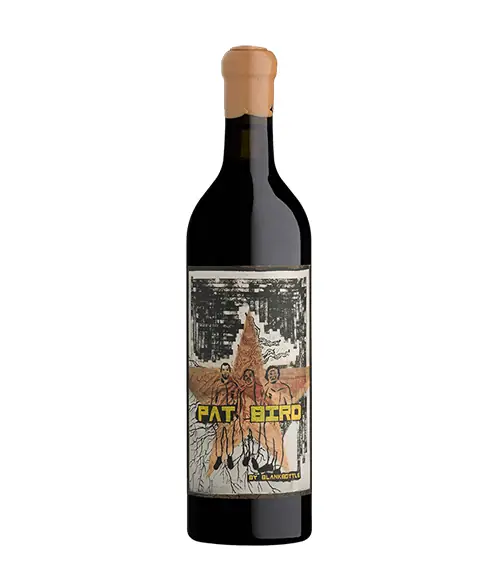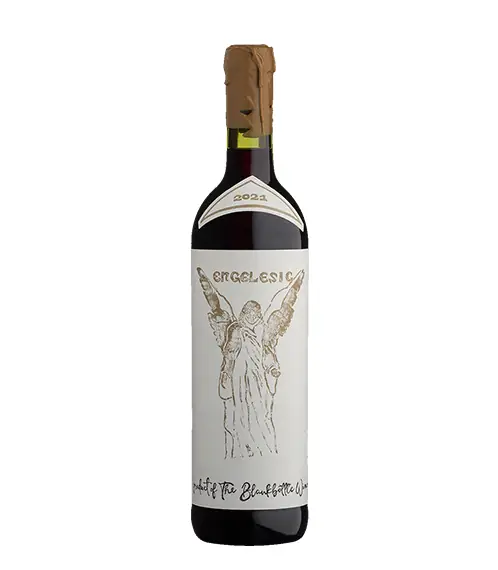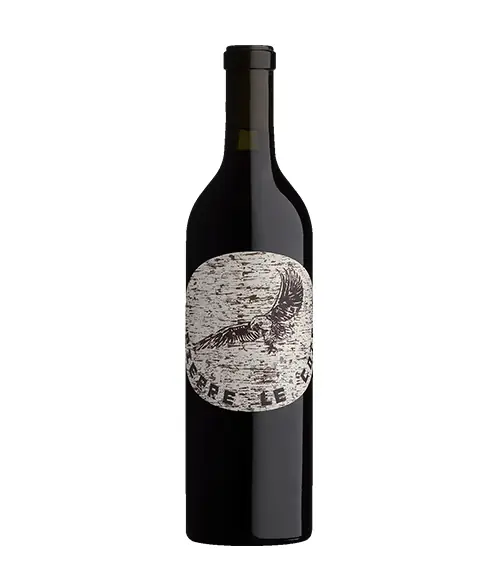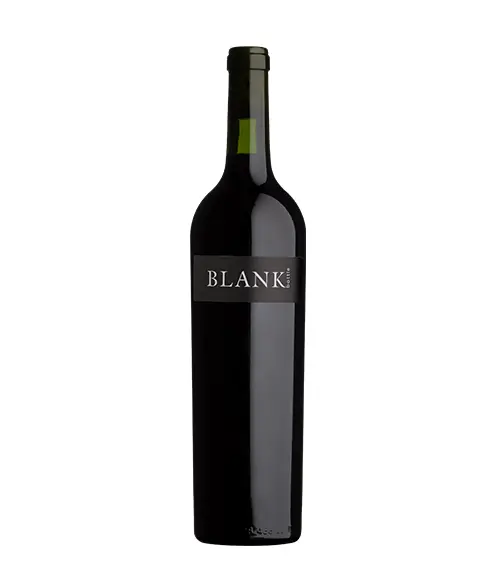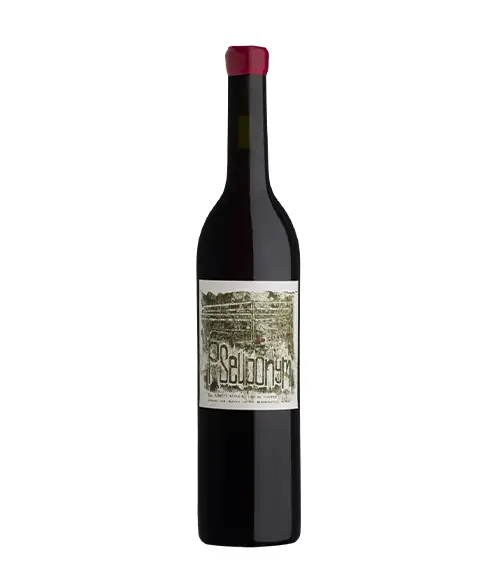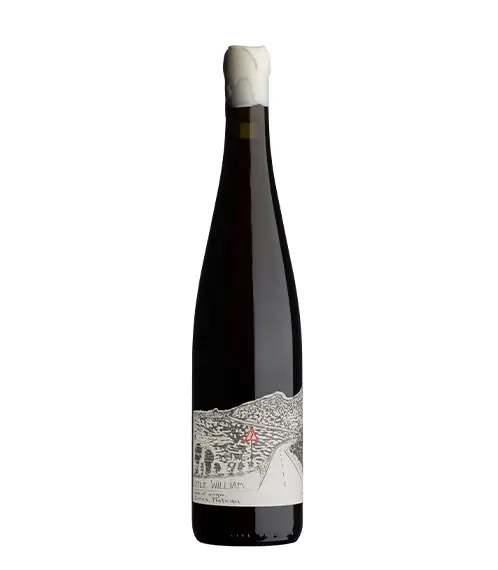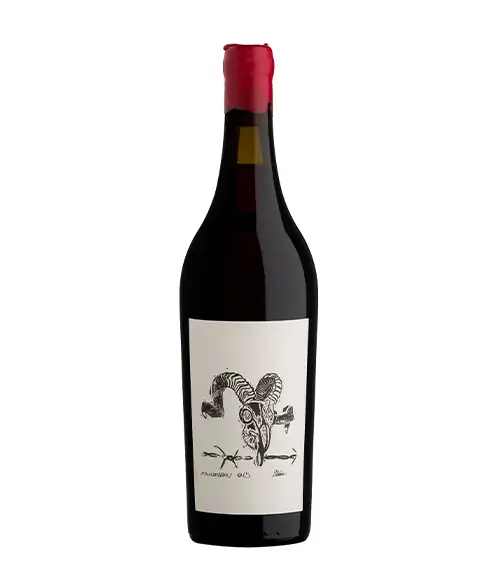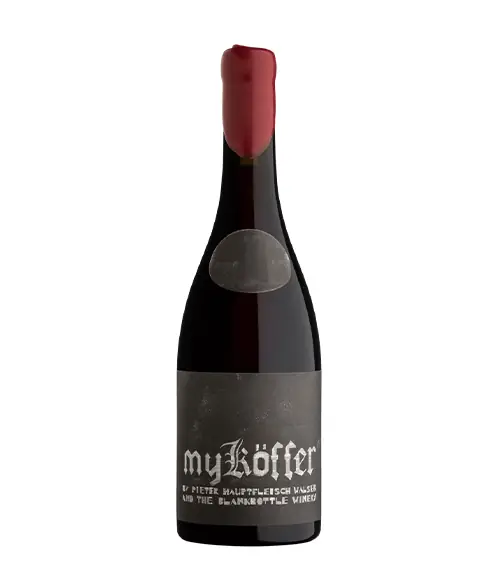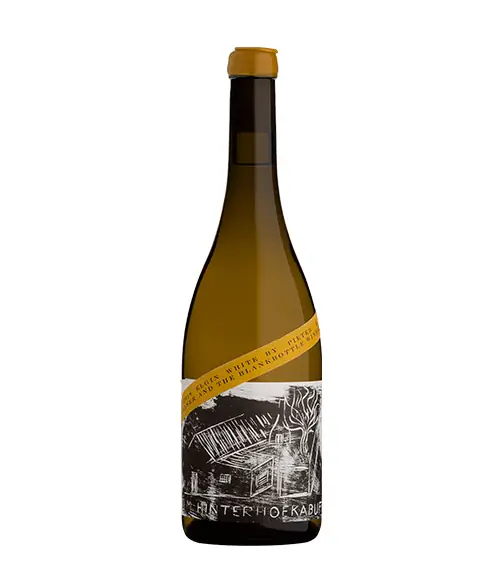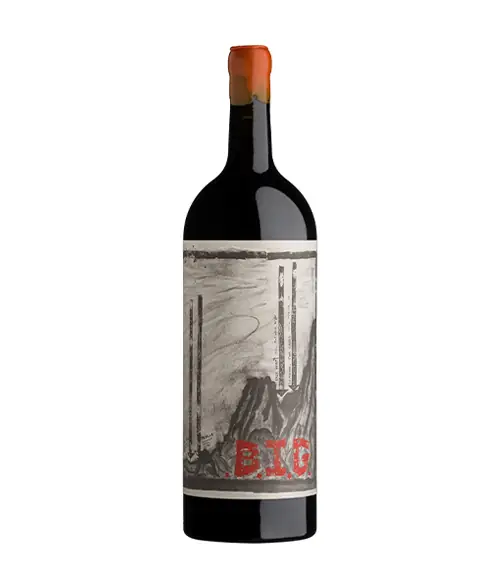BLANKbottle
BLANKbottle Autumn Equinox 2022
"This is a blend of Weisser Riesling, Semillon and Sauvignon blanc from Elgin
DISCLAIMER: I am no activist and I don't belong to any kind of organisation. I pick grapes from everywhere and respect each area for its contribution to a specific wine. In this newsletter however, I’m focusing on what Elgin does well and exploring the possible relevance of the Autumn Equinox theory. The Autumn Equinox theory… The more I learn about farming and wine, the more I wonder how the olden-day farmers decided what to plant where. Nowadays, before planting, farmers make use of professionals who scan the soil and dissect and analyse the different soil layers, physically as well as chemically. They study topographical data and in some cases make use of satellites and even drones. They construct terroir models in order to understand… Viticulturists (like Jaco Engelbrecht who works for me on a consultancy basis) also map the great Grand Cru vineyards of Europe which enables them to compare our new sites to the greats of the world.
All this is done with one goal in mind: figuring out what to plant where! Ultimately, however, they feed from decisions made in ancient times. Times when they got it right without satellites, drones and engineering surveyors. Times when they had time to observe… One such approach that was often used, is the Autumn Equinox theory. In the Northern Hemisphere the autumnal equinox falls on 22/23 September, as the sun crosses the celestial equator on its way south. In the Southern Hemisphere the Autumn equinox occurs on 20/21 March, when the sun moves back north across the equator - otherwise known as the “Harvest moon". Traditionally it marked the end of the harvest season, where they took stock of what was grown and gathered and gave thanks for what they had received. So their theory was very simple: plant whatever crop ripens a few days before, on, or after (basically as close as possible to) the Autumn Equinox. And that got me thinking about Elgin. During February and early March when the heat waves hit the Western Cape, grapes in Elgin are still green, with sugars around 16° Balling.
The vines have plenty of energy to sustain the heat and by the time the heat waves have passed, moderate temperatures take the grapes through a mild, slow ripening phase. This enables the vines to produce fully ripe grapes. And then, on the Autumn Equinox, the grapes usually have a sugar content of 21 - 23° balling, which is when we pick. So today I decided to release a mixed case of ELGIN wines (including a brand new wine in our portfolio) - stuff that ripened on 23 March, 28 March and a blend with a average picking time at the Autumn Equinox" - Winemaker' notes
BLANKbottle Orbitofrontal Cortex 2023
"Twelve different grape varieties make up the blend here, produced by Pieter Walser using his conscious mind. (There was a one-off "unconscious" assemblage as well!) Clairette Blanche, Grenache Blanc, Marsanne and Roussanne are all important components, creating a complex, layered white with lime, pear, rose water and orange zest flavours, a nip of tannin and a lingering finish." - Tim Atkin MW
BLANKbottle Familiemoord 2023
"Family Murder - is one of Pieter Walser's most famous wines, based on a true story with a happy ending about mistaken identity. Made with Grenache from Braam Marais' farm in Piekenierskloof, it's a refined, layered, fynbos-scented red with graceful tannins, lots of zip and minerality and flavours of pomegranate, strawberry and rooibos tea." - Tim Atkin MW
BLANKbottle Seelug 2023
"One hot day, during the harvest of ’22, I was sampling a little (as yet) un-named Chardonnay vineyard which a good friend had told me about. Situated on the lower slopes of the Helderberg, it overlooks False Bay. Glancing over towards the ocean that day, I could clearly see that the off-shore wind was blowing. This was good news to the Strand local I am, as the elusive off-shore wind grooms the waves, making them perfect for my local surf spot. I made a mental note to get a move-on with my sampling, no time to lose. But 20 minutes later, as I once again raised my head from my berry-picking, grape-squashing exercise, I glanced over the bay. D’oh! (as Homer Simpson would say) - the wind had turned onshore. I could clearly see the tell-tale "wit perdjies" on the horizon heading towards shore. In a few minutes the perfectly groomed waves would be destroyed. Deflated, I carried on with the task at hand. Then, another 20 minutes later it hit me - SEELUG! It suddenly felt like someone was spraying my sun-baked face with a cool, misty oyster extract - a fragrance of fresh, salty, damp bamboo… So whilst the onshore might be wrecking waves, it simultaneously pushes the hot air inland and hugs every Chardonnay plant in that vineyard with a fragranced coolness which not many vines ever experience. Seelug - A fresh, elegantly oaked, limey and delicious Chardonnay - more to the serious side of things." - Winemaker's notes
BLANKbottle The Bomb 2021
"This wine started way back - I bottled a straight 2010 Cabernet Sauvignon from a friend’s farm. The wine was big, but I loved it. After bottling, the Department of Agriculture came back with the final analysis. An alcohol of 16.14% - GOODNESS?! I stacked the wine in the back of the warehouse, not sure what to do with it. I then had a tasting at the Hinterhofkabuff with a German guy called Martin Baulmann, who subsequently became my agent in Germany. We tasted all my wines and at the end he asked me if I had something big for him to taste. "How do you mean; BIG?", I asked. "In colour, extraction, tannin?..."." Like in 15% alcohol...", he replied. "I think I have something even better for you" I said. So I opened a still unlabelled bottle and poured him a glass of what I was planning to name Midnight Call. He loved it and wanted to buy everything. For those of you who do not know Martin: He has a big frame, laughs loudly, and lives large. So afterwards I sat in the Hinterhofkabuff drinking a glass, thinking of this very big guy that loved this very loud wine. It seemed natural to change the name to THE BOMB." Winemaker's notes
BLANKbottle Engelesig 2021
BLANKbottle Pierre Le Cois 2021
"The X-factor - The PIERRE-LE-COIS-EFFECT as I call it. The guy and nowadays often, the girl in the bakkie. The eyes who look holistically at the big picture and apply knowledge and experience within the comfort of like minded wise minds - enabling the application of practices to guide these vines to the ultimate expression of themselves. Season upon season. " - Winemaker's notes
BLANKbottle Pseudonym 2022
"The kind of wine that would appeal to red Burgundy drinkers looking for a few cheaper alternatives to their favourite tipple, this ethereal, delicate, layered Cinsault comes from a 73-year-old vineyard in Darling. Fermented with 70% whole bunches, it's a refined delight, all red cherry, raspberry, pomegranate flavours underpinned by the grip and slight austerity of decomposed granite soils." - Tim Atkin MW
BLANKbottle Little William 2022
"The wine is named after my chance meeting with a little boy called William on the Witzenberg mountains. It’s been a fascinating story from the start, but became even more bizarre at the end of last year, with another chance meeting.
Little William reloaded!
In January 2016, I was driving back from a tiny little vineyard in the Koue Bokkeveld (Ceres Plateau). Cruising along at the 100km/h speed limit, I came to a very winding stretch of road leading towards the Witzenberg pass. Suddenly, for a split second, I thought I saw something in the middle of the road. I had just come through a super sharp bend and had to jump on the brakes with both feet. When I finally got my 470 000-km-on-the-clock Toyota to stop, there, on the white line in the middle of the road, stood a little blonde boy. I guessed him around a year and a half old. He was in his nappies and had a white T-shirt on, perfectly camouflaged on the white line. Unsure of what to do once I'd taken him out of the road, I thought it a good plan to prompt him and see which direction he takes off in (with myself of course right behind).
About 200 meters further along the road he (we) crossed a little bridge heading towards the other side of the canal. He turned up a dirt road which led to a farmhouse about 300 meters up a hill. Keeping up to his snail-like pace, we arrived at the house more or less 10 minutes later (in my experience with farm dogs, it wouldn’t have been wise to carry him). When the gardener saw us approaching, he called out to a woman at the house and judging by her reaction, she must’ve been his mom and he must’ve been missing for a while.
It was a bit of an emotional and chaotic environment so, knowing he was safe, I just turned around and left without introducing myself.
So each time I present a tasting with Little William wine as part of the line-up, I get the same question: “Why is it called, Little William?”, followed almost without fail by: “What does the family have to say about you calling a wine, Little William?” My answer is always the same: “I never went back, they don't even know the wine exists. But I am convinced there will be this one day where I’d be sitting at some local bar in Knysna, drinking a beer all by myself when the young guy next to me turns to me and introduces himself as William from Ceres." And I’ll be able to tell him: “Eendag, lank, lank gelede het hierdie oom jou lewe gered!”
For 4 years I had the privilege of telling the story of little William. Until last year. When Chapter 2 happened.
In November, we took our youngest son for a minor operation at Panorama Mediclinic, Tygerberg, Cape Town. The lady at reception looked at us with a puzzled look on her face. We later learnt that there had been a mistake on the paperwork and they were under the impression that he was an adult. They had subsequently booked him into an adult ward. The man next to him had drunk a cup of coffee at 6:00am that morning with milk in. His operation therefore had to be postponed and he obviously missed his theatre time slot. He had to wait almost the whole day for the next slot. He and Sebastian eventually left for the theatre at more or less the same time. I went to get us a cup of coffee, and as she always does, Aneen started making conversation with the milk-in-the-coffee guy’s wife. On my return Aneen said: ”They are from Ceres, tell her the little William story.” I cringed, thinking: "Why would I do that??" I tried to let her comment slide and filled the awkward silence with useless words. We carried on with the small talk and she ended up telling us that she is a vet and her husband is a farmer. “Where do you farm in Ceres?”, I asked. “In the Witzenberg mountains, on a farm called Blah-blah-blah”, she answered.
And, as you’ve probably guessed by now, that was the name of the farm where I dropped little William that morning. It started dawning on me that it might be my Knysna-bar-thing moment happening in a totally bizarre, different way. “Do you have a son called William?” I asked. “No”, she replied, “but my nephew is called William and they live on the same farm, in the house next to the road.” We did the sums and he would’ve been exactly 1 and a half years at the time. So it turns out it wasn't a beer-in-hand pub in Knysna, but a coffee-in-hand hospital in Cape Town. I should've listened to Aneen right from the start... so I told her the whole story and she phoned her sister-in-law. “Did you ever lose William on the farm?” she asked (I don’t think that’s the type of story you volunteer to tell your extended family if not prompted). “Yes”, she said. “There was this one day…”
PS: This incident made me think about everyone’s life stories. I’m convinced that these kind of things happen to everyone. The difference is that I just happened to call a wine Little William, and I have a reason to re-tell this story. If I didn’t, I would’ve possibly only re-told the story once or twice, but I can imagine how the finer details could've gotten lost between profit margins and VAT. I have a responsibility to convey the story in an honest and factual way. You know how easily a story gets blurry. So each time I drive the road, I recheck my facts: Where exactly did William stand? Distances? The name of the farm? The story then became part of our story. And that day when the lady mentioned Ceres, the first thing Aneen thought about was the boy in the road." Winemaker's notes
BLANKbottle Orbitofrontal Cortex 2022
BLANKbottle Orbitofrontal Cortex 2022, "The barrels I like", is how Pieter Walser describes the selection process for this Chenin Blanc and Verdelho based blend with 46% Clairette Blanche, Grenache Blanc, Marsanne, Roussanne and a soupçon of Viognier. Lightly skin fermented, it has top notes of wild flowers and wet stone, citrus, pear and grapefruit flavours and a finish that lingers on the palate. Delicious."- Tim Atkin MW
BLANKbottle Seelug 2022
BLANKbottle Seelug 2022, "Did it go through malolactic fermentation," I asked Pieter Walser. "I didn’t even check," he replied. But who cares? This is a delightful new Chardonnay from a sea breeze-influenced site on the Lower Heldeberg, showing notes of honey, fresh dough and lemon butter and a fresh, zesty finish." - Tim Atkin MW
BLANKbottle “Retirement @ 65” 2022
"Retirement @ 65? Let's hope that's not in Pieter Walser's plans, so that he can go on making wines like this Darling assemblage of Cinsault with 44% Syrah. Fermented with around 50% whole bunches, this is "almost a field blend", with plum, bramble and red berry fruit, lots of zip and minerality and sinewy tannins." - Tim Atkin MW
BLANKbottle My Koffer 2022
"One of two remarkable Cinsaults in the BLANKbottle line up, My Köffer comes from a parcel of river stones in Breedekloof, picked in three stages to maximise complexity. Bolder and broader than Pseudonym, it has impressive concentration and depth, savoury tannins, some clove and pepper spices and layers of plum, strawberry and black cherry. Delicious." Tim Atkin MW
BLANKbottle Hinterhofkabuff 2022
"Sourced from the same grower as the Jan Niemand Riesling - this vineyard uses vertical shoot positioning - this has a little more weight, presence and concentration. Showing lots of extract and depth, it combines apple and lime flavours with a hint of peach and 5.27 grams of residual sugar." - Tim Atkin MW

